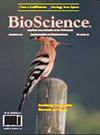钾剂量与 Cerrado 土壤中甘薯生物乙醇产量的关系
IF 0.5
4区 农林科学
引用次数: 0
摘要
评估了甘薯生物乙醇产量对钾肥施用量的反应。实验采用 5 × 2 因子设计,其中的因素包括土壤中的 K2O 施用量,有五个水平(0、30、60、120 和 240 kg ha-1)和基因型,有两个水平(工业基因型 BDGPI #25 和餐桌基因型 BDGPM #04)。评估了根产量、根淀粉和可溶性固体含量、生物乙醇产量以及施钾生产生物乙醇的经济可行性。钾对两种基因型的根产量都有影响,在 140 kg K2O ha-1 时产量最高。收获时根的淀粉浓度取决于基因型的潜力而不是钾剂量。新鲜根中的可溶性固形物含量低于熟根,在这种情况下,BDGPM#04 和 BDGPI#25 分别在每公顷 109.69 千克 K2O 和 123.75 千克 K2O 时观察到最高转化效率。BDGPI#25 和 BDGPM#04 的生物乙醇产量分别在 151.87 和 136 kg K2O ha-1 时达到 10,484 和 9,839 L ha-1。在 151.87 kg K2O ha-1 的条件下,基因型 BDGPI#25 将钾转化为生物乙醇的效率高于甘蔗,可生产 10,484.29 升生物乙醇。反过来,BGDPM#04 在 122 kg K2O ha-1 的转化效率上也比甘蔗高。本文章由计算机程序翻译,如有差异,请以英文原文为准。
Relationship of potassium doses with bioethanol yield in sweet potato in Cerrado soil
Sweet potato-bioethanol yield was evaluated in response to potassium fertilizer application. Experiments were performed using a 5 × 2 factorial design in which factors included the amount of K2O applied to the soil, with five levels (0, 30, 60, 120, and 240 kg ha-1) and genotype, with two levels (industrial genotype BDGPI #25 and table genotype BDGPM #04). Root yield, root starch and soluble solid contents, bioethanol yield, and economic viability of potassium application for bioethanol production were evaluated. Potassium affected root yield of both genotypes, with the highest yield observed at 140 kg K2O ha-1. Root starch concentration at harvest depended on genotype potential rather than potassium dose. Soluble solid content in fresh roots was lower than that in cooked roots, in which case, maximum conversion efficiency was observed at 109,69 and at 123.75 kg K2O ha-1 for BDGPM#04 and BDGPI#25, respectively. Bioethanol yield reached 10,484 and 9,839 L ha-1 at 151.87 and 136 kg K2O ha-1 for BDGPI#25 and BDGPM#04, respectively. Genotype BDGPI#25 was more efficient than sugarcane in converting potassium to bioethanol at 151.87 kg K2O ha-1, producing 10,484.29 L of bioethanol. In turn, BGDPM#04 showed maximum conversion efficiency relative to sugarcane at 122 kg K2O ha-1.
求助全文
通过发布文献求助,成功后即可免费获取论文全文。
去求助
来源期刊

Bioscience Journal
AGRICULTURE, MULTIDISCIPLINARY-AGRONOMY
CiteScore
1.10
自引率
0.00%
发文量
90
期刊介绍:
The Bioscience Journal is an interdisciplinary electronic journal that publishes scientific articles in the areas of Agricultural Sciences, Biological Sciences and Health Sciences. Its mission is to disseminate new knowledge while contributing to the development of science in the country and in the world. The journal is published in a continuous flow, in English. The opinions and concepts expressed in the published articles are the sole responsibility of their authors.
 求助内容:
求助内容: 应助结果提醒方式:
应助结果提醒方式:


